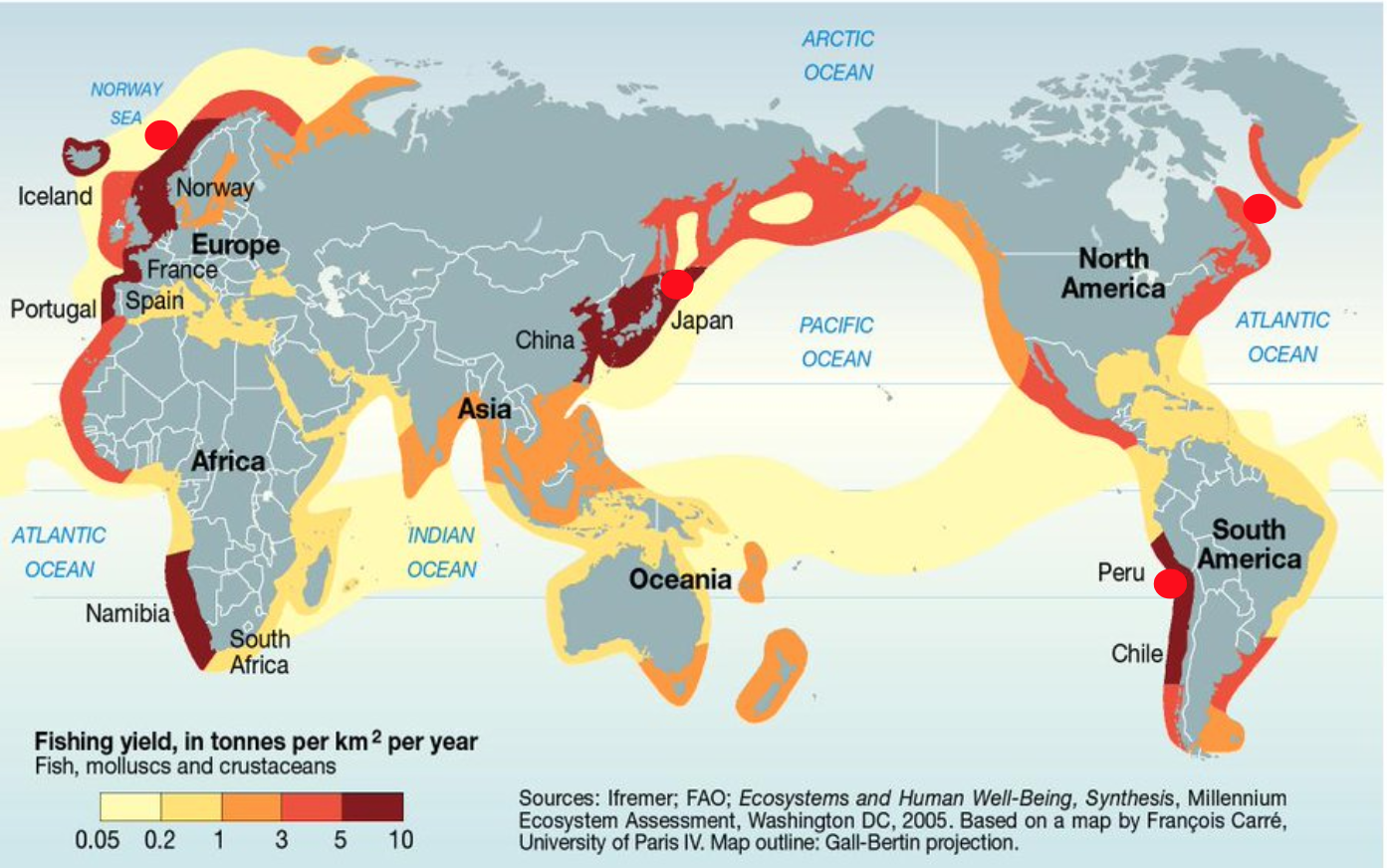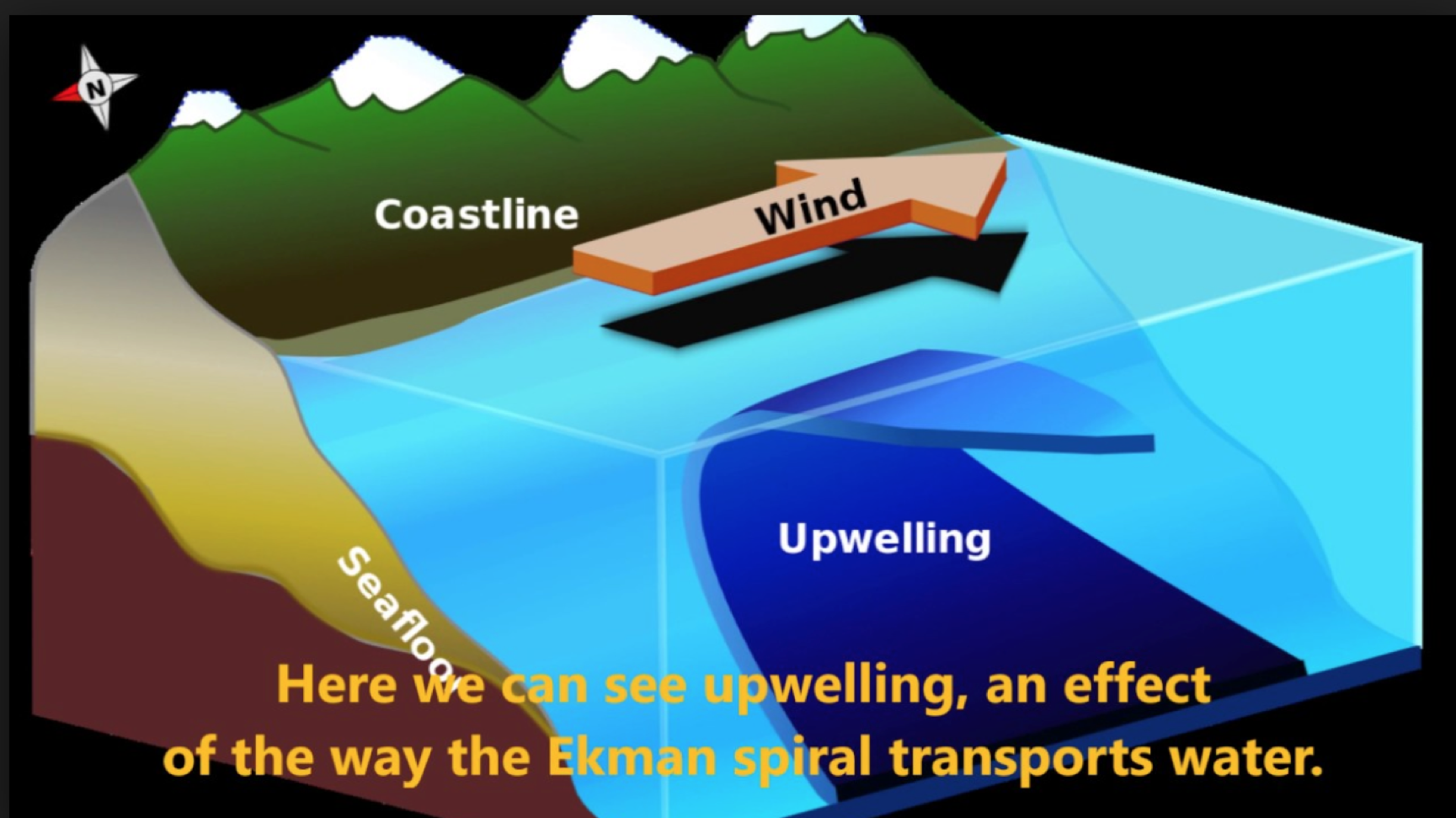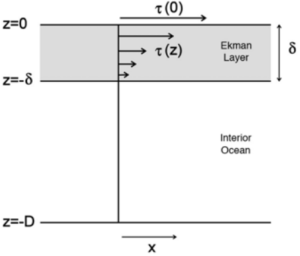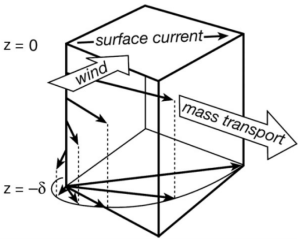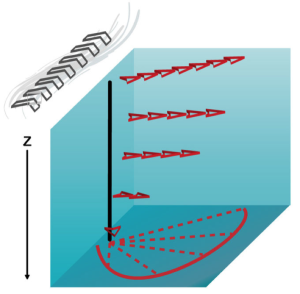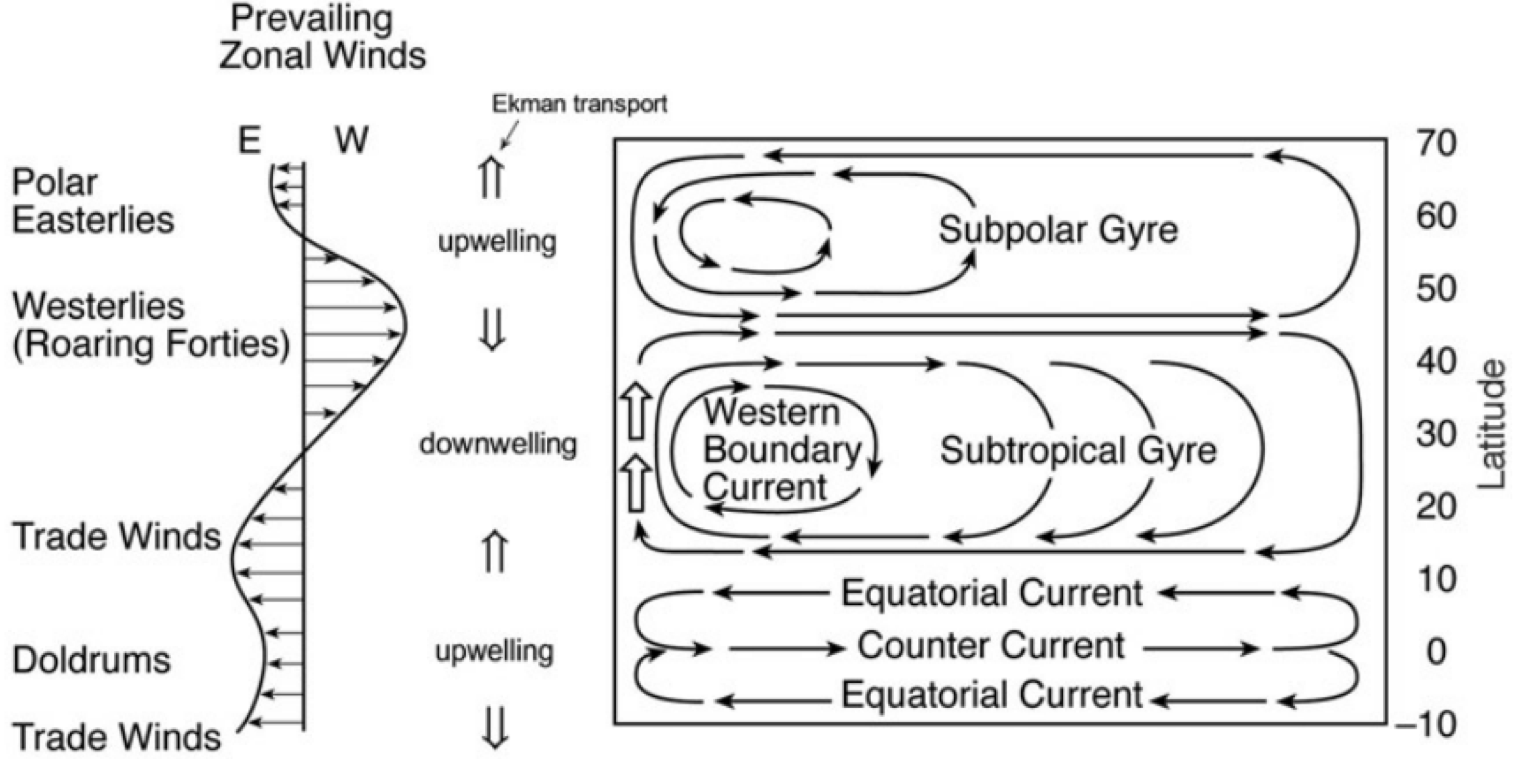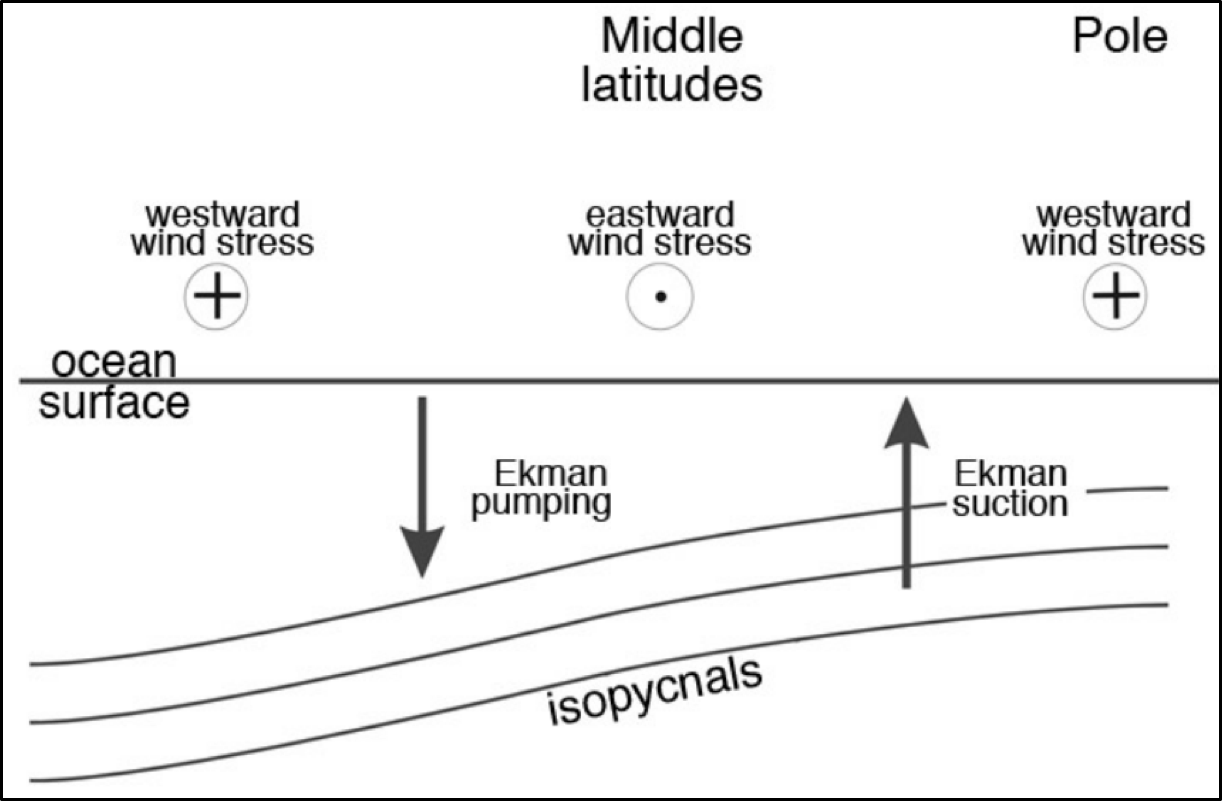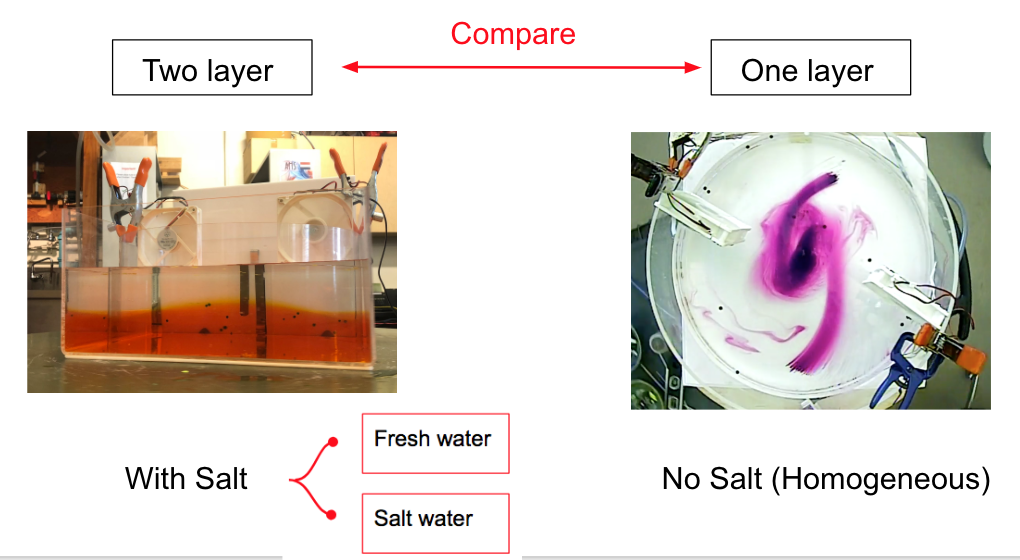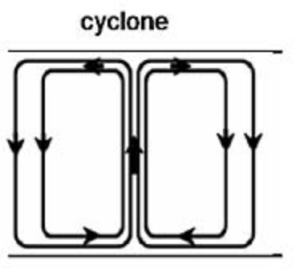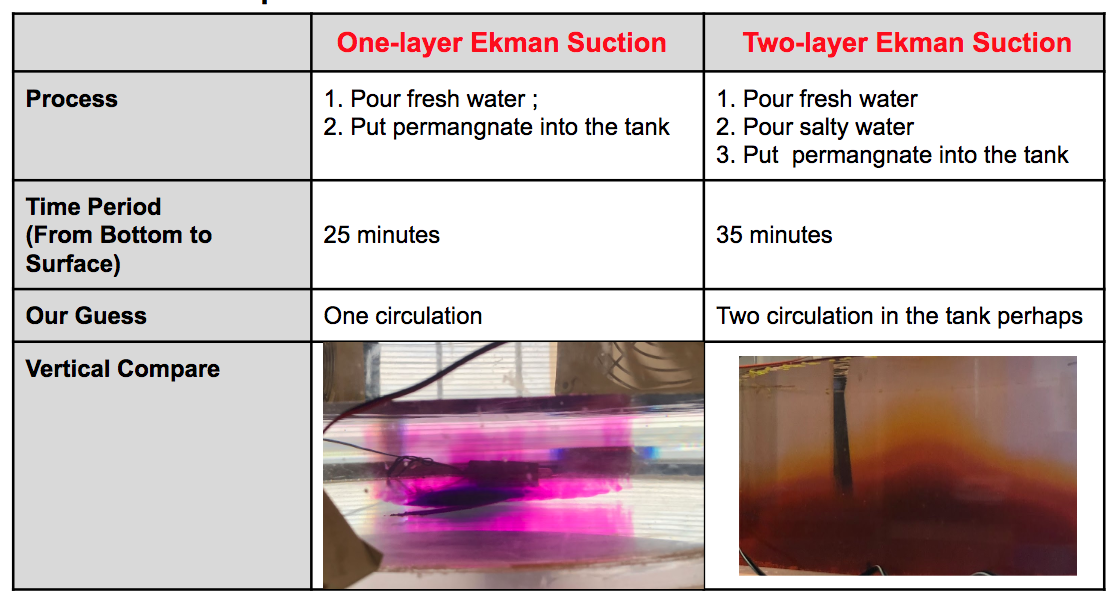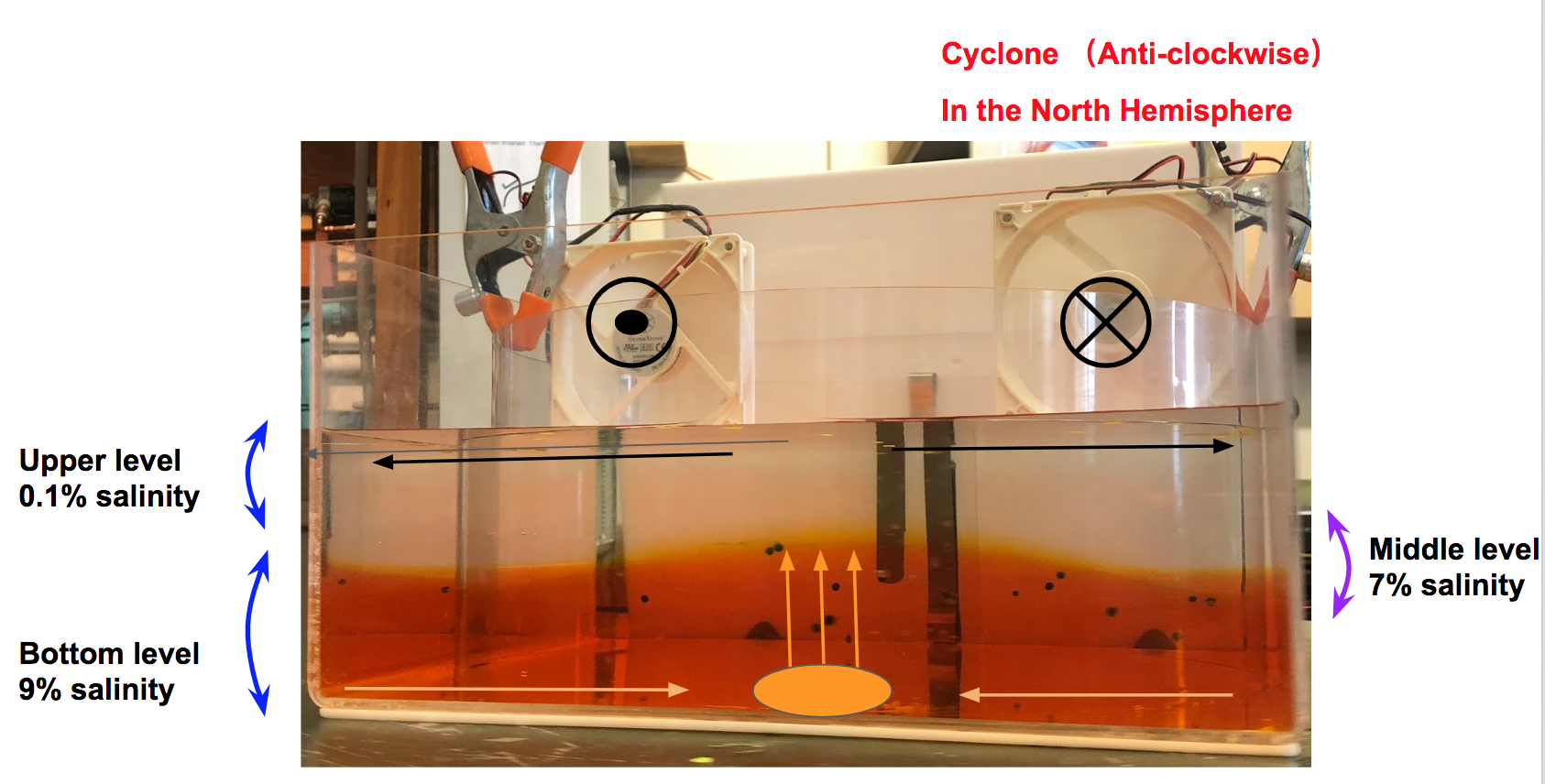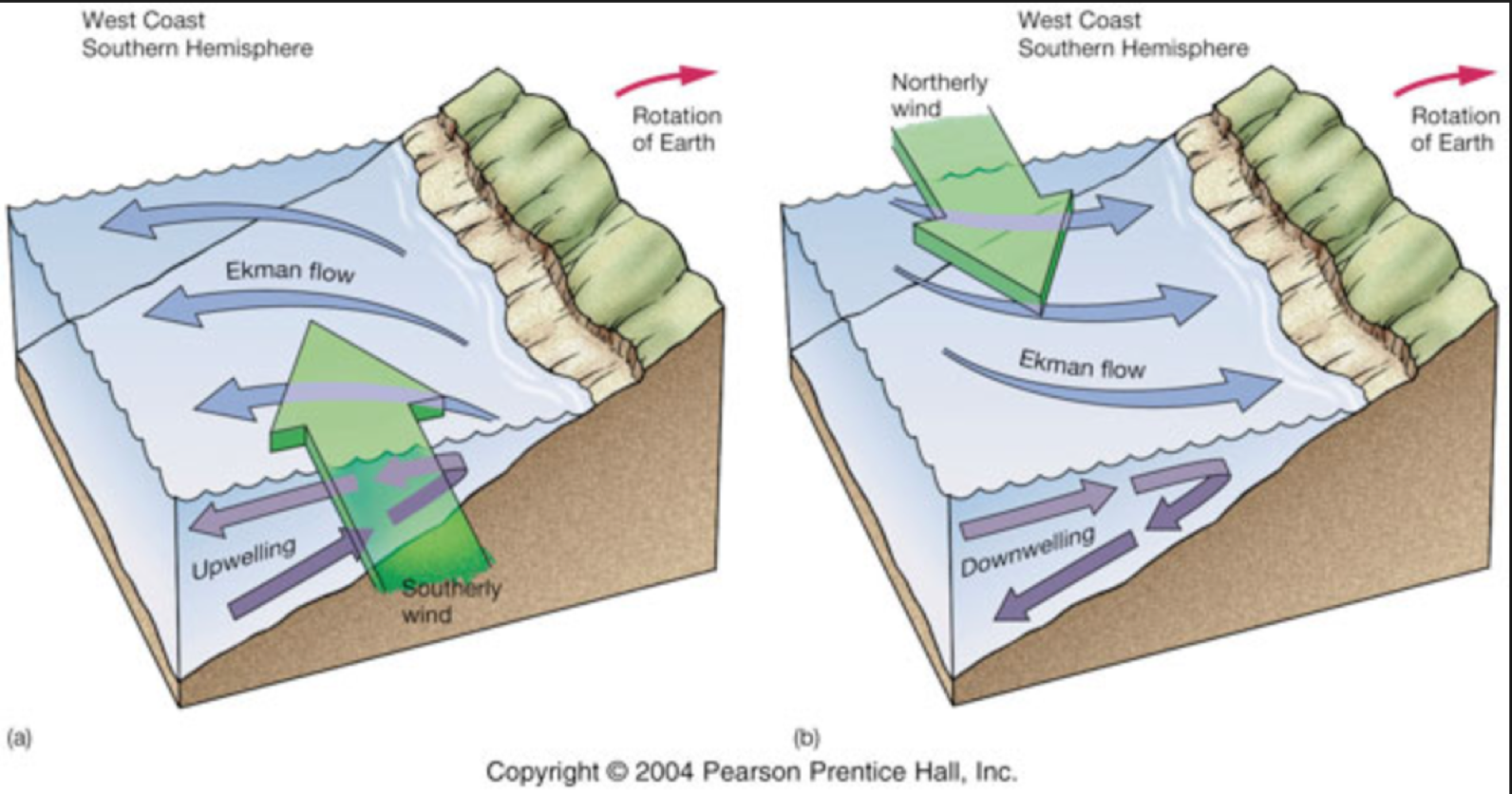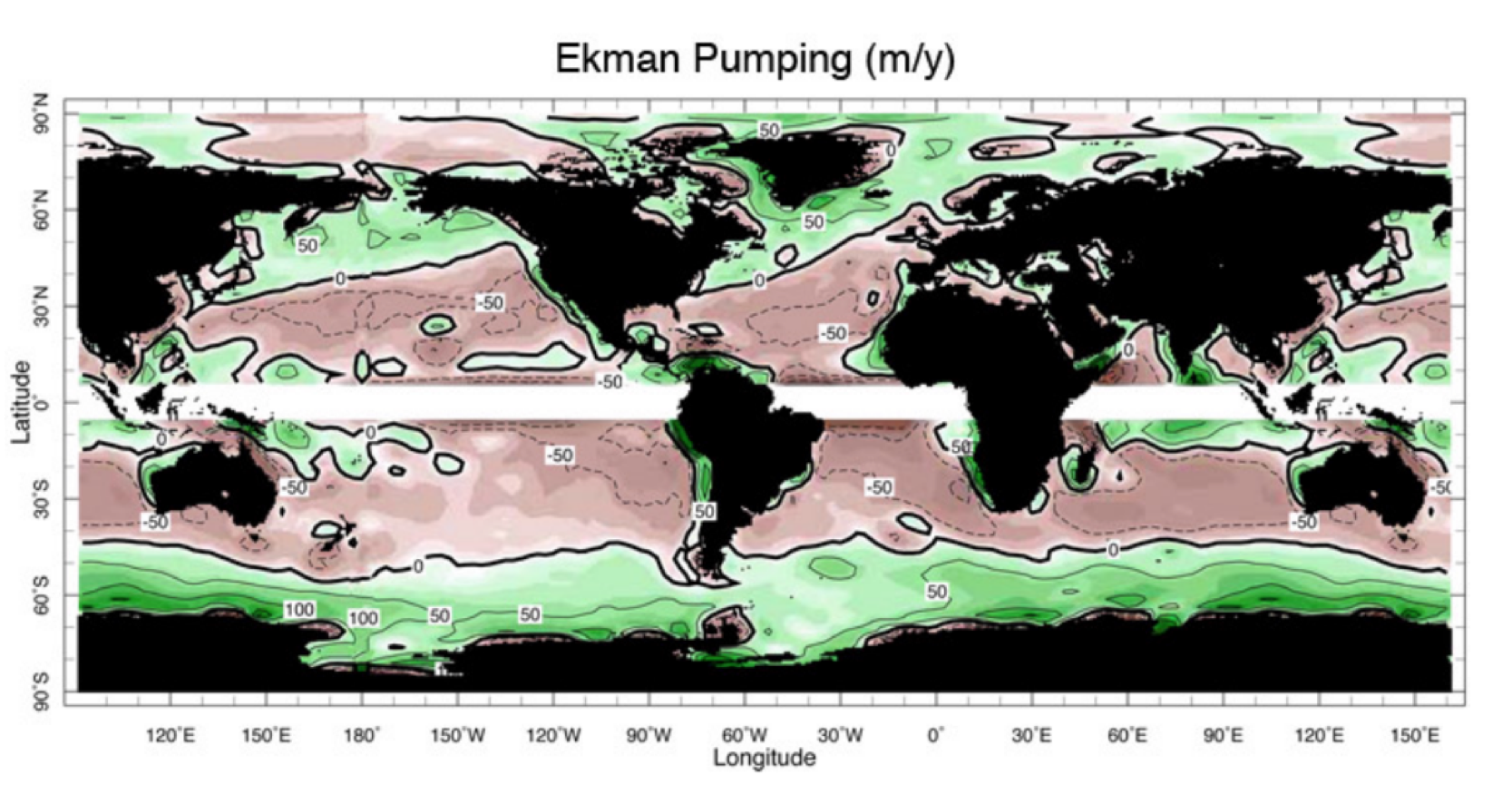Isabel (Yuying Wu) —— 12.307 class in 2018 Spring semester
1. Introduction
a. b.
Fig.1 (a)(b) Ekman suction and fishery
2. Theroy
Ekman transport, part of Ekman motion theory first investigated in 1902 by Vagn Walfrid Ekman, refers to the wind-driven net transport of the surface layer of a fluid that, due to the Coriolis effect, occurs at 90° to the direction of the surface wind. This phenomenon was first noted by Fridtjof Nansen, who recorded that ice transport appeared to occur at an angle to the wind direction during his Arctic expedition during the 1890s. The direction of transport is dependent on the hemisphere: in the northern hemisphere, transport occurs at 90° clockwise from wind direction, while in the southern hemisphere it occurs at a 90° counterclockwise.
a. b. c.
Fig. 2 (a)(b)(c) Ekman Transport is the net motion of fluid as the result of a balance between Coriolis and turbulent drag forces. In the picture above, the wind blowing North creates a surface stress and a resulting Ekman spiral is found below it in the water column.
Fig.3 Wind Stress and Ekman transport (Ekman pumping and suction)
3. Experiment
The situation is reversed at the bottom of the tank, however. There the stress opposes the direction of the large-scale interior flow inducing ageostrophic flow at the bottom that is directed outward (inward) in an anticyclone (cyclone), as shown in the diagram below:
a. b.
Fig. 4 (a)(b) Experiment setting and diagram
3.1 Two-Layer Experiment
a. b. c.
Fig. 5 (a)(b)(c) Experiment photos (the middle one is Alex, team member)
3.2 Homogeneous Experiment (One-Layer)
| a. |
b. |
|---|---|
c. | d. |
Fig. 6 Ekman layer in tank (Cyclonic)
3.3 Comparison
Fig. 7 Comparison between two experiments
4. Data Analysis
a. b.
Fig.8 The relationship between Peru Fishery and Ekman Suction
